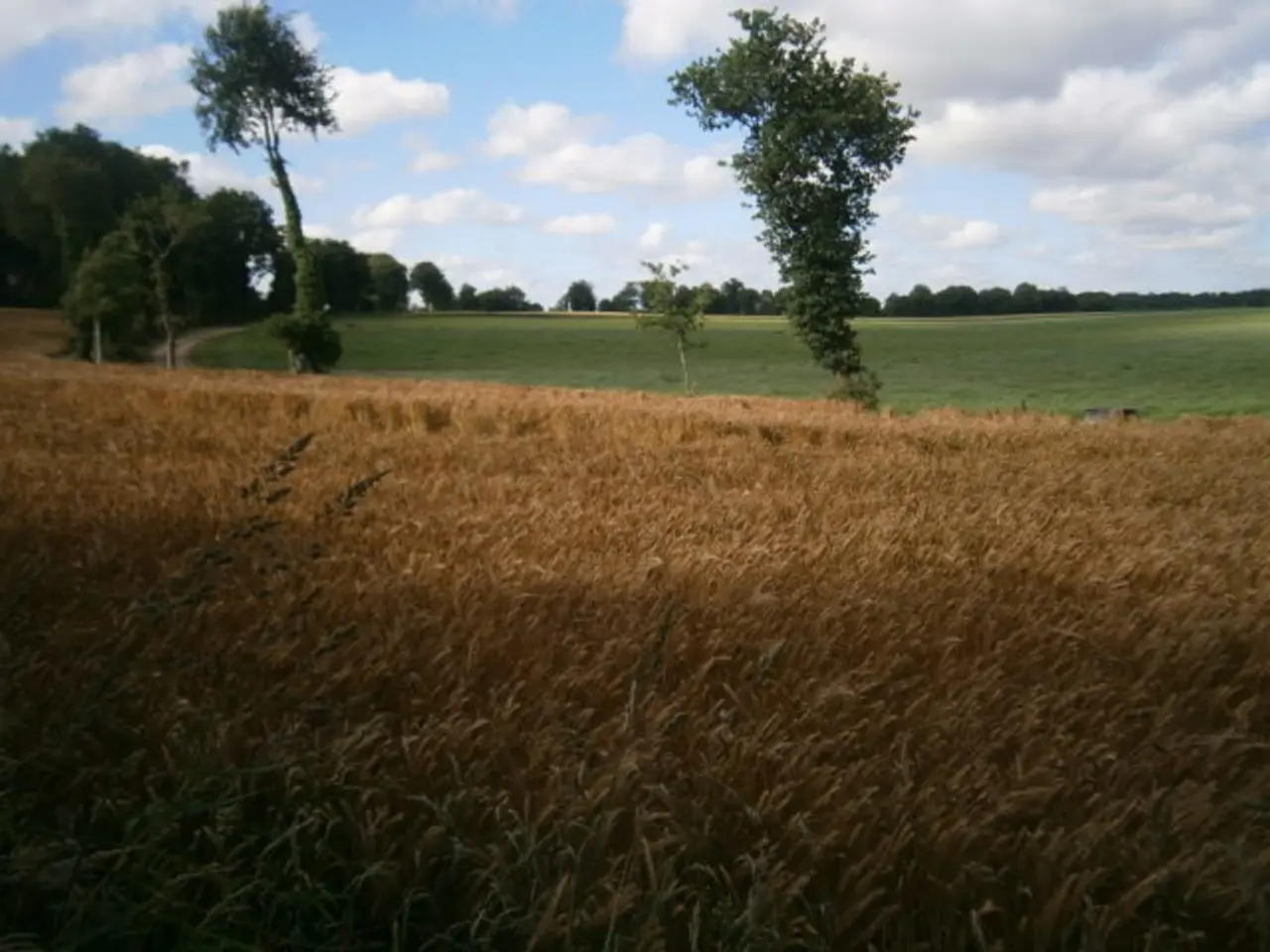Uneven distribution of the Indian monsoon, according to the government, was discussed in Rajya Sabha
In the realm of agriculture, India has made significant strides, particularly in the horticulture sector. As of August 2025, the country has established 58 Centres of Excellence (CoEs) for fruits and vegetables under the Mission for Integrated Development of Horticulture (MIDH). These CoEs serve as hubs for demonstration, training, and dissemination of advanced horticultural technologies. Their primary objectives are to enhance capacity building, supply quality planting materials, and promote new cultivation techniques among farmers.
The Union Government provides support for setting up these CoEs in collaboration with various stakeholders, including bilateral partners. While the specific countries involved in these cooperation agreements are not explicitly detailed, it is known that India actively collaborates with international partners for these Centres.
The Digital Agriculture Mission (DAM), approved by the government in September 2024, is another initiative aimed at modernising India's agricultural sector. The DAM encompasses geo-referenced village maps, a crop sown registry, and a farmers registry.
Another notable programme is the Pradhan Mantri Fasal Bima Yojana (PMFBY), which has insured a sum of ₹20,11,076 crore under its umbrella. As of June 30, 2025, PMFBY covered a gross cropped area of 4,972 lakh hectares, and has paid ₹1,83,259 crore to 22.67 crore farmer applications since its inception in 2016-17.
Notably, the Indo-Israel Agricultural Project (IIAP) has facilitated the establishment of CoEs across various states, incorporating Israeli technology and know-how to enhance productivity, improve water use efficiency, and ensure quality produce. The Union Government has entered into a bilateral agreement with the Government of Israel for cooperation in agriculture, including horticulture development and fruit production.
Similarly, India has entered into bilateral cooperation agreements with the Governments of the Netherlands and New Zealand for the establishment of Centres of Excellence (CoEs) for fruits and vegetables. These collaborations underscore India's commitment to fostering international partnerships in the agricultural sector.
Despite uneven spatial distribution of monsoon, normal sowing has been reported in all major kharif crops across the country. The progressive area sown in kharif season 2025 under foodgrains, oilseeds, and commercial crops was 932.93 lakh hectares, an increase from the previous year.
In terms of human resources, there are a total of 6,586 Scientific posts in the Indian Council of Agricultural Research (ICAR). However, only 23% of the posts of Senior Scientist and Principal Scientist are filled through lateral entry.
Digital initiatives are also making strides in India's agricultural sector. The Digital Crop Survey has been undertaken in 492 districts for more than 23.5 crore plots. As of August 4, a total of 7,04,49,809 Farmer IDs have been generated under AgriStack.
In conclusion, India's agricultural sector is witnessing a digital and technological revolution, with initiatives like the Centres of Excellence for fruits and vegetables playing a pivotal role in this transformation. The country's commitment to collaboration with international partners and its focus on modernising its agricultural sector bode well for its future agricultural growth and development.
- Beyond the horticulture sector, India's agricultural industry is also seeking to integrate advanced technologies, as demonstrated by the Digital Agriculture Mission (DAM).
- The Digital Agriculture Mission (DAM) consists of geo-referenced village maps, a crop sown registry, and a farmers registry - all aimed at modernizing India's agricultural sector.
- To foster international partnerships, India has entered into bilateral cooperation agreements with countries such as Israel, the Netherlands, and New Zealand for the establishment of Centres of Excellence (CoEs) in agriculture.
- These Centres of Excellence (CoEs) are not only being used for demonstration and training in horticulture, but they are also being established for various crops and across various states.
- The Union Government has partnered with various stakeholders, including bilateral partners, to set up these Centres of Excellence (CoEs) for enhancing capacity building and promoting new cultivation techniques among farmers.
- The agricultural sector's modernization is also reflected in the Pradhan Mantri Fasal Bima Yojana (PMFBY), which has insured a sum of ₹20,11,076 crore and covered a gross cropped area of 4,972 lakh hectares as of June 30, 2025.
- In an effort to improve productivity, quality, and water use efficiency, India has collaborated with the Government of Israel in the Indo-Israel Agricultural Project (IIAP), which has facilitated the establishment of CoEs across several states.
- The ICAR, responsible for India's agricultural research, could potentially see growth and development in human resources with the filling of more Senior Scientist and Principal Scientist positions through lateral entry.




